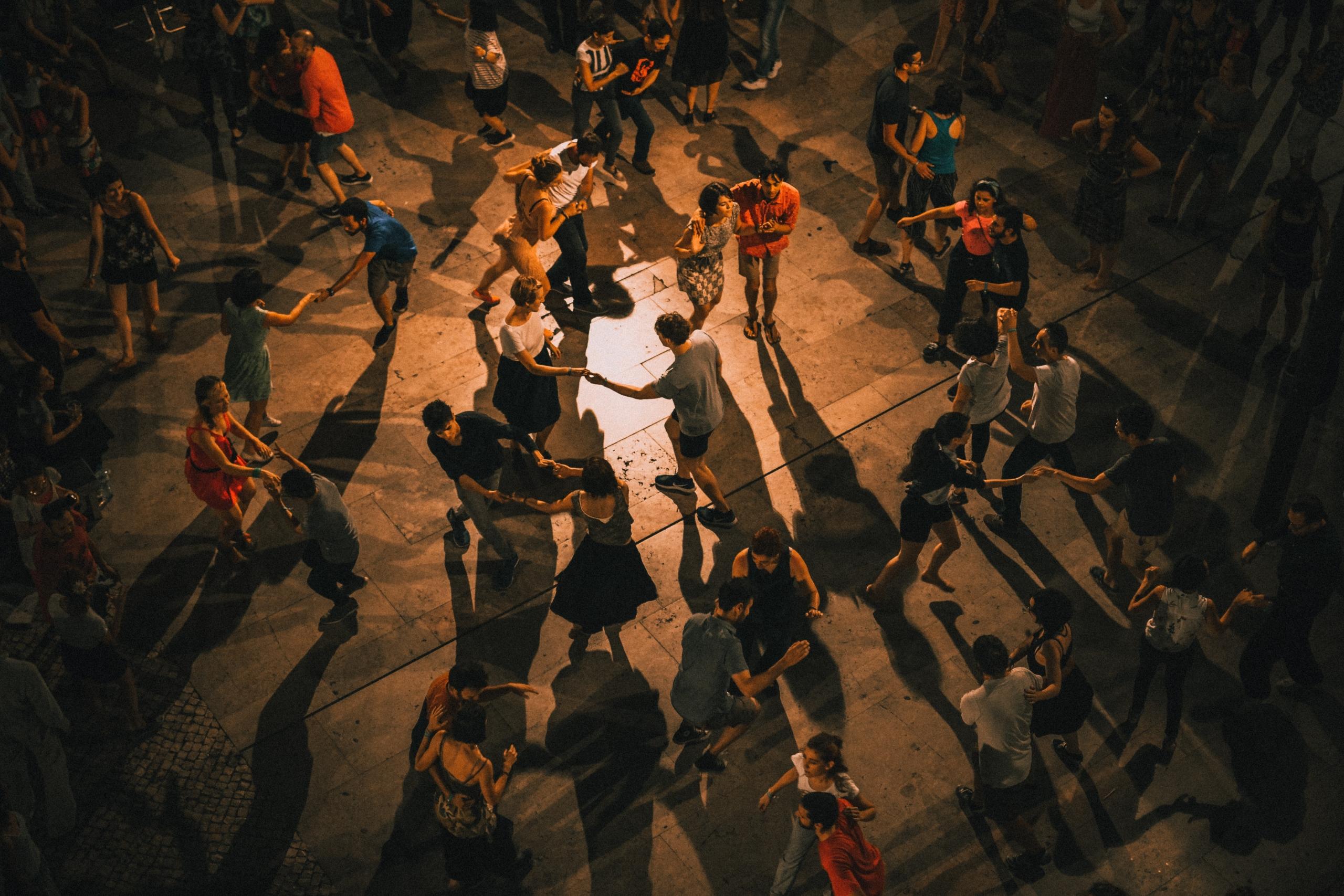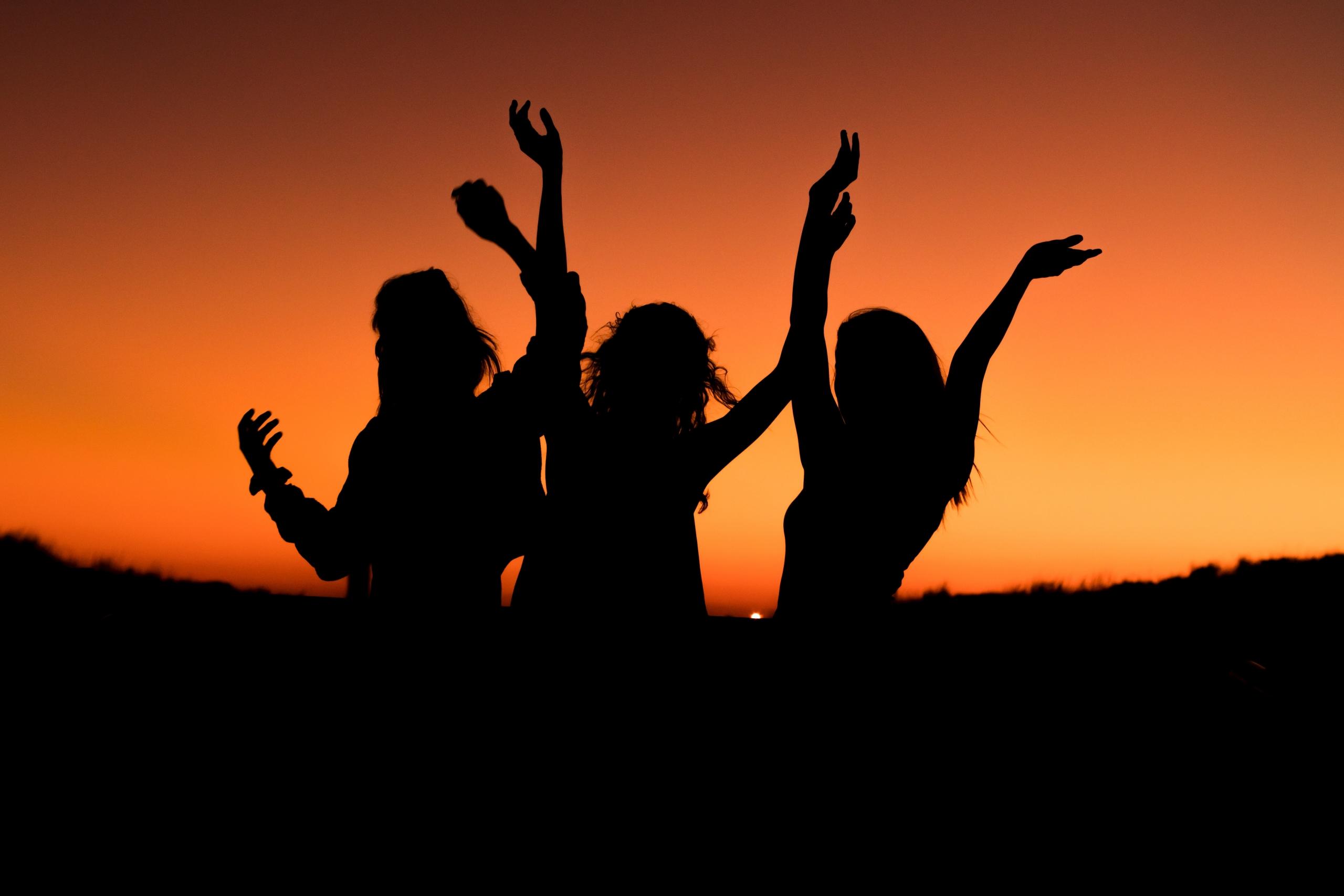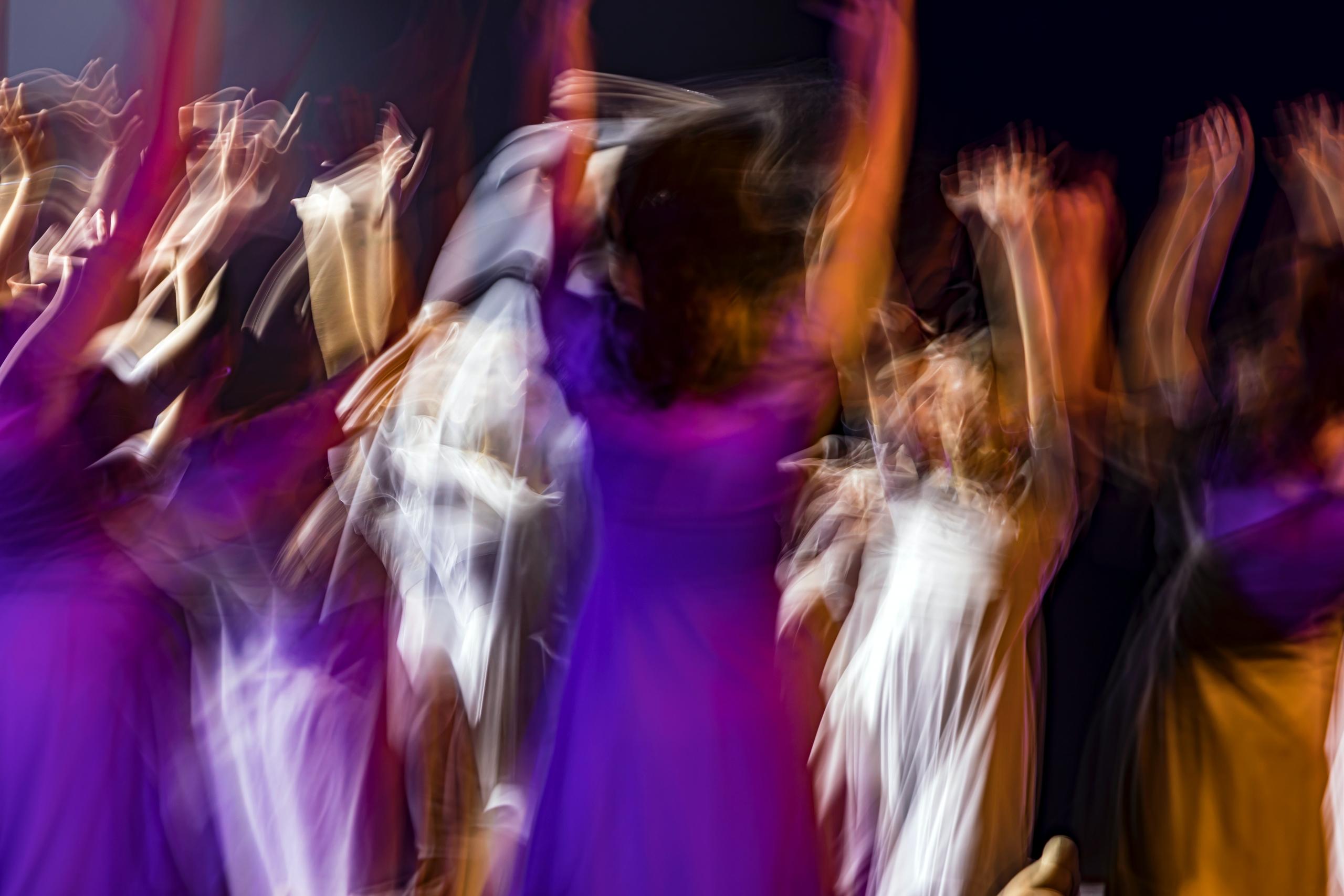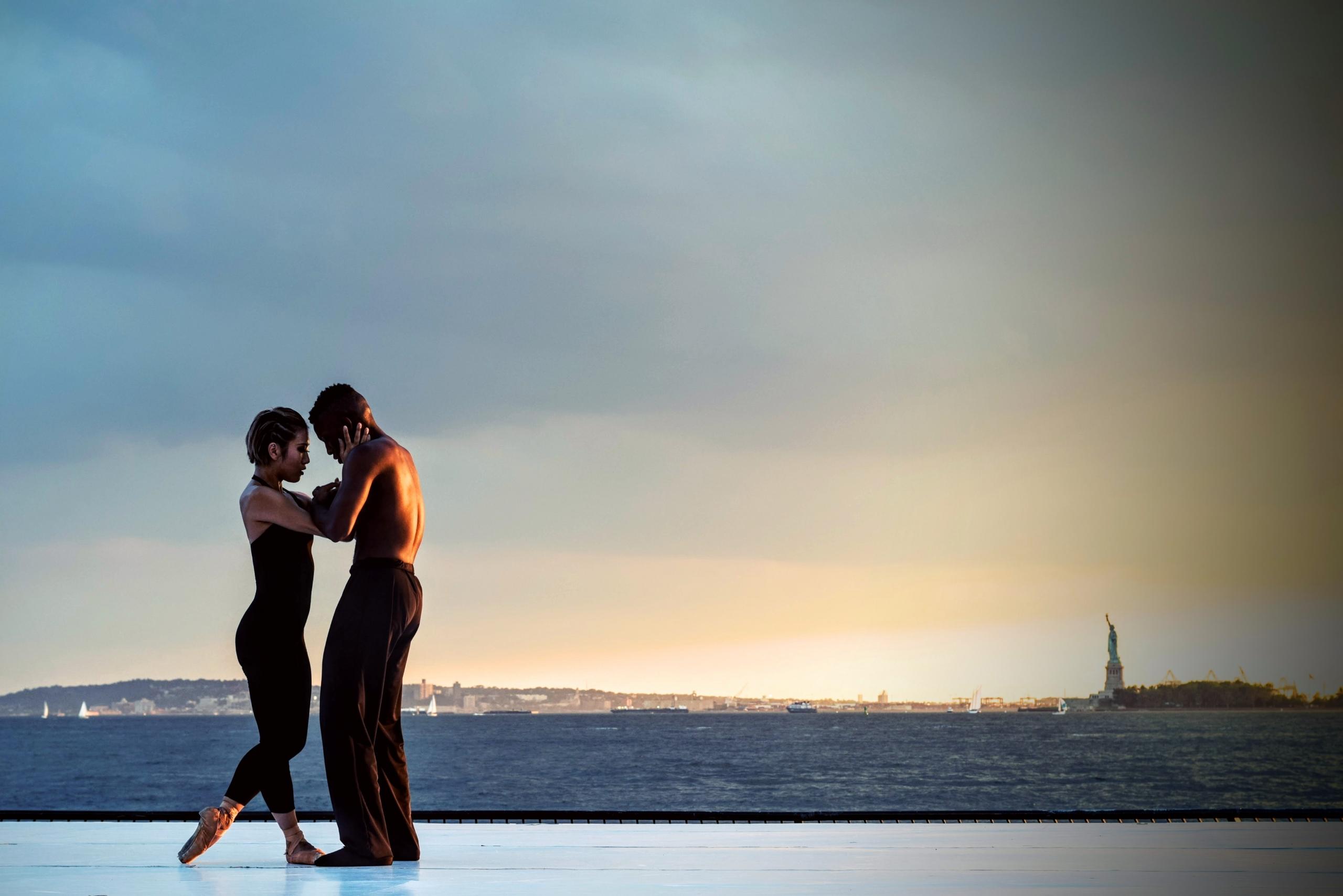In salsa, there is joy; in cumbia, there is soul. Both remind us that dance is the heartbeat of Latin America.
Carlos Vives, Colombian singer and ambassador of Latin music
Salsa and cumbia are two of Latin America’s most loved dances, each with its own rhythm and character. While they share similarities, salsa is fast, energetic and full of sharp turns, while cumbia flows with slower, smoother steps. Salsa grew in Cuba and later spread through New York, mixing Caribbean sounds with urban flair. Cumbia was born on Colombia’s coast, blending Indigenous, African, and Spanish influences into a rhythm of community and celebration. Both dances express the warmth and spirit of Latin culture. This article will compare and contrast the two genres by exploring their roots and movements, to find out what truly sets them apart!

What Is Salsa?
Salsa dancing is a dancing style that originated in Latin American communities and became highly common in the region and even in the United States. Salsa is one of Latin America’s most vibrant and influential dances, born from a mix of rhythms and cultures. It began in Cuba in the early 1900s, growing out of son cubano, a blend of Spanish guitar and African percussion. The style later flourished in New York City during the 1960s and 1970s, where Cuban, Puerto Rican, and Dominican musicians developed it into a global dance and music movement.

Salsa is recognized for its fast tempo, syncopated beats, and partner choreography filled with turns, spins, and expressive body movement. The clave rhythm, a five-beat pattern, drives the music while instruments such as congas, bongos, timbales, brass, piano, and bass add layers of rhythm and excitement. Over time, regional styles emerged such as the elegant New York style, the showy LA style, and the circular Cuban casino. Legendary performers like Celia Cruz, the “Queen of Salsa,” Héctor Lavoe, Rubén Blades, and Willie Colón helped define its sound. On the dance floor, icons like Eddie Torres and Maykel Fonts elevated salsa to an art form. Today, salsa continues to bring people together through its passion, rhythm, and joyful expression.
Salsa wasn’t always called salsa! In the 1960s, musicians in New York used the word “salsa”, meaning “sauce” in Spanish, to describe the spicy mix of rhythms from Cuba, Puerto Rico and other Latin countries. The perfectly captured the two cultures that made this dance so exciting!
It is also characterized by the Afro-Cuban rhythms which trace the roots of salsa to Central and West Africa. Salsa music is played with a wide variety of instruments that include bongos, timbales, and conga drums, all of which are instruments found in West African music. Finally, salsa is characterized by being a combination of many other different genres like mambo, bolero, merengue, cumbia, rumba, Brazilian samba, and bossa nova. Continue reading and learn about Cumbia and the difference between Cumbia and Salsa!
What Is Cumbia?
Learning about salsa and the places where it is common in the United States is as important as learning about the other types of Latino genres like merengue, cha, bachata, mambo and cumbia. Cumbia is one of Colombia’s most symbolic dances, representing the country’s history and cultural blend. It originated on Colombia’s Caribbean coast during the colonial period and was shaped by African rhythms, Indigenous melodies, and Spanish traditions.

First performed as a courtship dance, cumbia celebrated love, community, and unity through movement and song. The music follows a steady 2/4 rhythm powered by drums like the tambor mayor, llamador, and bombo, along with the caña de millo (a traditional flute) and maracas. The dance is smooth and graceful, often performed in circles with men leading gentle zigzag steps and women gliding in time, sometimes holding candles or handkerchiefs to emphasize the rhythm.
Cumbia’s influence has spread across Latin America, inspiring versions such as Mexican cumbia, Argentine cumbia villera, and Peruvian cumbia. Artists like Andrés Landero, Totó la Momposina, and modern groups like Bomba Estéreo have helped keep the style alive while adding new sounds. Today, cumbia remains a symbol of joy, culture, and connection across the continent.
Cumbia began on Colombia’s Caribbean coast and soon spread across Latin America. Each country gave it a special touch. Mexico added the accordion, Argentina made it more urban and Peru mixed in electric guitars. Today, cumbia is danced and loved everywhere, from Colombia to California!
If you want to learn how to dance Cumbia you can start by searching for a dancing tutor right here on Superprof. Our tutors have different backgrounds, levels of experience, and teaching methods. You first need to define what it is you want to learn from your tutor before you chose to hire someone. Keep in mind that the lessons can be online or in-person, it depends on what modality you chose; sometimes online can be more simple, but in person, your tutor can correct all your moves, the position of each foot, your body posture, and other small important details.

Key Differences Between Salsa and Cumbia
First, you need to understand that salsa music has six different styles. However, salsa and cumbia have many similarities and sometimes people tend to confuse both. For instance, in salsa, there is the Colombian style and Cumbia originated in the same country. This is why people tend to confuse both genres. They have similar origins, uses of instruments, beats and rhythm.

Music Structure
Salsa music is built on a layered rhythm driven by the clave beat, combining brass, piano, and percussion to create a bright, complex sound. Cumbia music has a simpler structure led by drums, maracas, and flutes, giving it a steady, rolling rhythm. The slower pace makes it easier to follow, allowing dancers to move naturally with the beat.
Dance Styles
Salsa is known for its sharp turns, quick steps, and strong connection between partners. It can be danced in straight lines or circular patterns depending on the style. Cumbia uses slower, side-to-side steps with gentle hip movements and smooth transitions. Where salsa highlights speed and energy, cumbia focuses on grace, rhythm and emotion.

Cultural Significance
Salsa and cumbia both carry deep cultural meaning. Salsa grew out of Latin urban life, reflecting creativity and identity in cities like Havana and New York. Cumbia keeps close to its rural and coastal roots, expressing community, celebration, and love through dance. Both continue to evolve, keeping the rhythm of Latin culture alive wherever they’re danced.
| Category | Salsa | Cumbia |
|---|---|---|
| Origin | Originated in Cuba in the early 1900s and later grew in popularity in New York City during the mid-20th century. | Originated on Colombia’s Caribbean coast with African, Indigenous, and Spanish influences. |
| Tempo & Rhythm | Fast-paced, upbeat, and built on the clave rhythm; energetic and syncopated. | Slower and steady rhythm with a drum-led beat; smooth and flowing. |
| Dance Style | Involves sharp turns, spins, and footwork; often danced in a line or slot. | Features side-to-side swaying and circular movements; focuses on storytelling and connection. |
| Music Instruments | Uses brass, piano, conga drums, bongos, timbales and other Afro-Cuban instruments. | Played with drums (tambor, bombo), maracas, flute (caña de millo) and rattles. |
| Cultural Background | Represents urban Latin life, expression and identity. | Reflects rural and traditional roots; a dance of community and celebration. |
| Social Setting | Common in clubs, festivals, and dance studios; expressive and performance-driven. | Often danced at festivals, carnivals, and family gatherings; community-centered and inclusive. |
| Learning Level | Requires technique and coordination; best for dancers seeking challenge and precision. | Easier for beginners; focuses on rhythm, grace and connection. |
| Expression | Symbolizes passion, energy and individuality. | Symbolizes unity, romance and cultural pride. |
| Popular Variations | Cuban, New York, LA, Colombian and Casino styles. | Regional forms include Cumbia Colombiana, Cumbia Mexicana and Cumbia Argentina. |
| Overall Feel | Dynamic, structured, and high-energy. | Gentle, rhythmic, and emotional. |
You can search for some of the best adult dance classes near me here.
Similarities Between Salsa and Cumbia
Salsa and cumbia share deep Latin American roots, shaped by the mix of African, Indigenous, and European traditions. Both started as social dances, bringing people together at community events, family gatherings, and street festivals. The focus has always been on joy, rhythm and connection rather than performance. In both styles, the rhythm leads everything. Drums, maracas and other percussion instruments keep the beat steady, inviting dancers to move together in harmony.
Each style encourages partners to communicate through their movements, matching steps and feeling the pulse of the music. Improvisation also plays a big role, letting dancers express emotion and spontaneity as they move. At their core, salsa and cumbia are about celebrating togetherness. They carry the warmth and energy of Latin culture, telling stories of community and shared spirit every time the music begins.
Key Takeaways: Similarities Between Salsa and Cumbia 💃
- Latin Roots: Both come from Latin America, shaped by African, Indigenous and Spanish influences.
- Social Dance: Each started as a community dance, bringing people together to celebrate and enjoy music.
- Percussion Beats: Both use drums, maracas, and hand percussion to keep a lively rhythm.
- Partner Style: Salsa and cumbia are partner dances, built on teamwork, rhythm and flow between dancers.
- Freestyle Moves: Dancers often improvise, adding their own style and emotion to the steps.
- Cultural Meaning: Both celebrate Latin identity, tradition and joy, expressing stories through movement.
- Worldwide Influence: Salsa and cumbia are danced all over the world, keeping their Latin spirit alive.
- Emotional Feel: Each dance shares love, joy and connection, creating a strong bond between dancers and music.
Choosing Between Salsa and Cumbia
Choosing between salsa and cumbia depends on what kind of rhythm and feeling you connect with most. Salsa is fast, bold, and full of excitement, perfect for people who love a challenge and enjoy moving to a strong beat. It thrives in lively settings like clubs and festivals where dancers show off quick steps and turns with confidence and flair.
Cumbia, on the other hand, is slower, smoother, and deeply traditional. It is often danced in circles and pairs at family gatherings or festivals. The steps are simple and easy to follow, which makes it great for beginners. Its rhythm feels relaxed and natural, focusing on connection and storytelling instead of complex choreography. Cumbia dances often tell stories of love and togetherness, bringing people closer through movement and music.
If you enjoy fast-paced music with detailed footwork, salsa might be the perfect fit. If you prefer a calm rhythm and expressive movement, cumbia will feel more natural. Both dances celebrate life, emotion, and culture, keeping the rhythm of Latin America alive on every dance floor.
You can also continue reading about this topic in our article about the time when salsa became popular in the US!
















